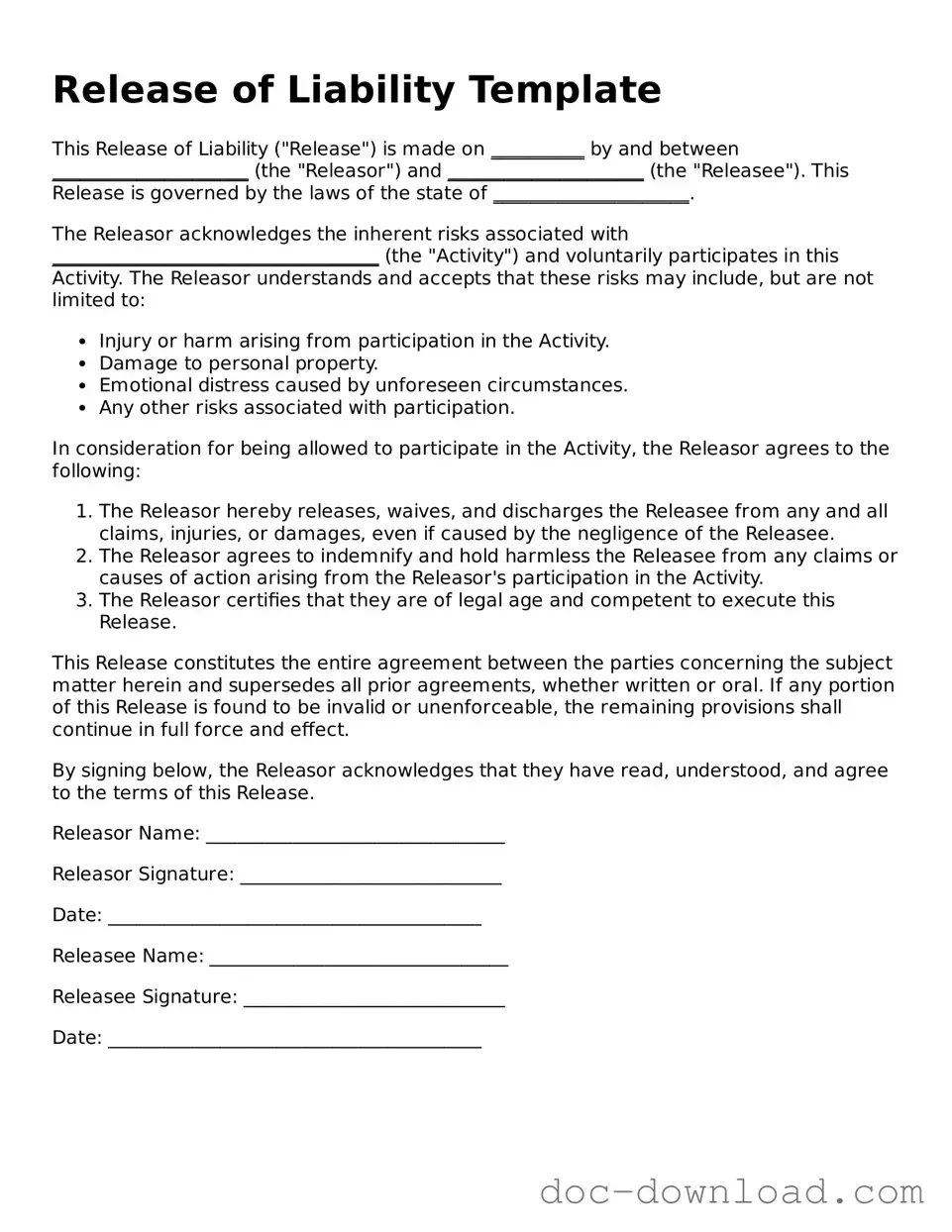Release of Liability Template
This Release of Liability ("Release") is made on __________ by and between _____________________ (the "Releasor") and _____________________ (the "Releasee"). This Release is governed by the laws of the state of _____________________.
The Releasor acknowledges the inherent risks associated with ___________________________________ (the "Activity") and voluntarily participates in this Activity. The Releasor understands and accepts that these risks may include, but are not limited to:
- Injury or harm arising from participation in the Activity.
- Damage to personal property.
- Emotional distress caused by unforeseen circumstances.
- Any other risks associated with participation.
In consideration for being allowed to participate in the Activity, the Releasor agrees to the following:
- The Releasor hereby releases, waives, and discharges the Releasee from any and all claims, injuries, or damages, even if caused by the negligence of the Releasee.
- The Releasor agrees to indemnify and hold harmless the Releasee from any claims or causes of action arising from the Releasor's participation in the Activity.
- The Releasor certifies that they are of legal age and competent to execute this Release.
This Release constitutes the entire agreement between the parties concerning the subject matter herein and supersedes all prior agreements, whether written or oral. If any portion of this Release is found to be invalid or unenforceable, the remaining provisions shall continue in full force and effect.
By signing below, the Releasor acknowledges that they have read, understood, and agree to the terms of this Release.
Releasor Name: ________________________________
Releasor Signature: ____________________________
Date: ________________________________________
Releasee Name: ________________________________
Releasee Signature: ____________________________
Date: ________________________________________
